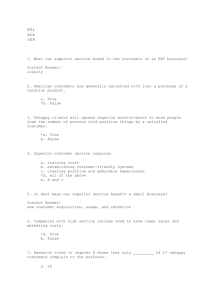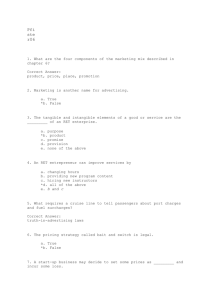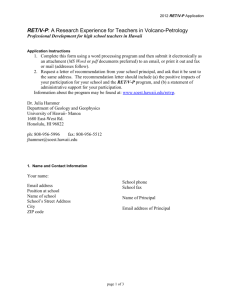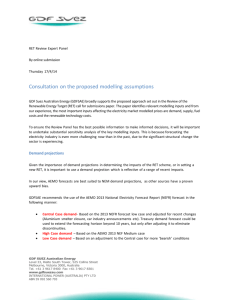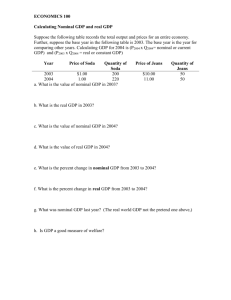Chapter 36 Key Question Solutions
advertisement
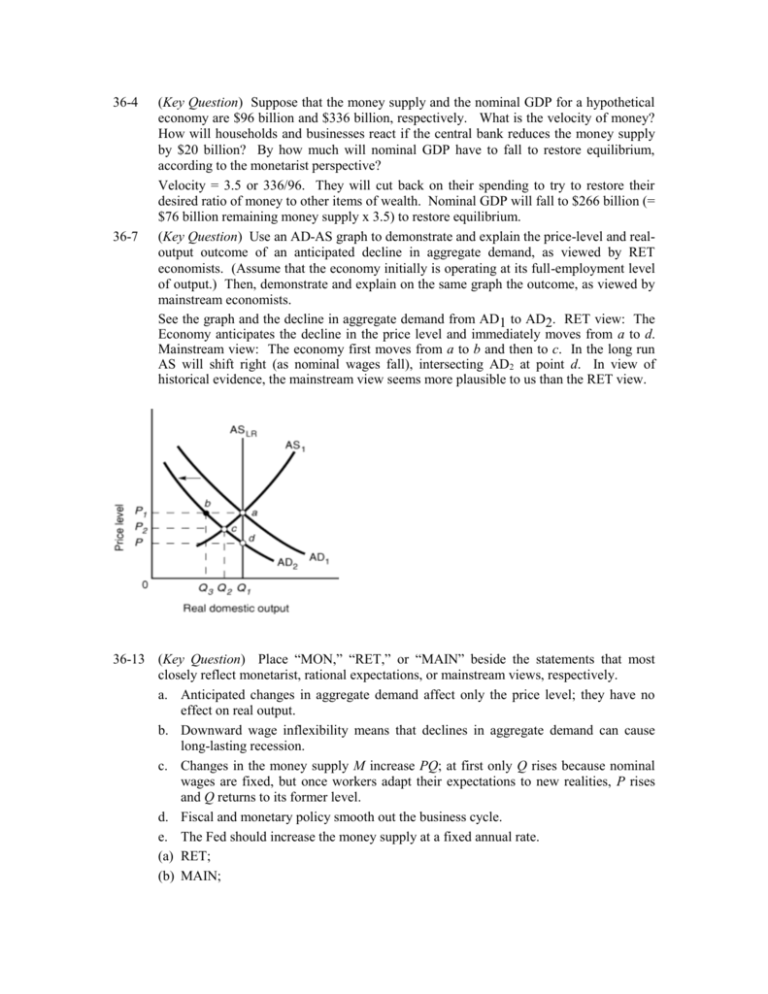
36-4 36-7 (Key Question) Suppose that the money supply and the nominal GDP for a hypothetical economy are $96 billion and $336 billion, respectively. What is the velocity of money? How will households and businesses react if the central bank reduces the money supply by $20 billion? By how much will nominal GDP have to fall to restore equilibrium, according to the monetarist perspective? Velocity = 3.5 or 336/96. They will cut back on their spending to try to restore their desired ratio of money to other items of wealth. Nominal GDP will fall to $266 billion (= $76 billion remaining money supply x 3.5) to restore equilibrium. (Key Question) Use an AD-AS graph to demonstrate and explain the price-level and realoutput outcome of an anticipated decline in aggregate demand, as viewed by RET economists. (Assume that the economy initially is operating at its full-employment level of output.) Then, demonstrate and explain on the same graph the outcome, as viewed by mainstream economists. See the graph and the decline in aggregate demand from AD1 to AD2. RET view: The Economy anticipates the decline in the price level and immediately moves from a to d. Mainstream view: The economy first moves from a to b and then to c. In the long run AS will shift right (as nominal wages fall), intersecting AD2 at point d. In view of historical evidence, the mainstream view seems more plausible to us than the RET view. 36-13 (Key Question) Place “MON,” “RET,” or “MAIN” beside the statements that most closely reflect monetarist, rational expectations, or mainstream views, respectively. a. Anticipated changes in aggregate demand affect only the price level; they have no effect on real output. b. Downward wage inflexibility means that declines in aggregate demand can cause long-lasting recession. c. Changes in the money supply M increase PQ; at first only Q rises because nominal wages are fixed, but once workers adapt their expectations to new realities, P rises and Q returns to its former level. d. Fiscal and monetary policy smooth out the business cycle. e. The Fed should increase the money supply at a fixed annual rate. (a) RET; (b) MAIN; (c) MON; (d) MAIN; (e) MON.
